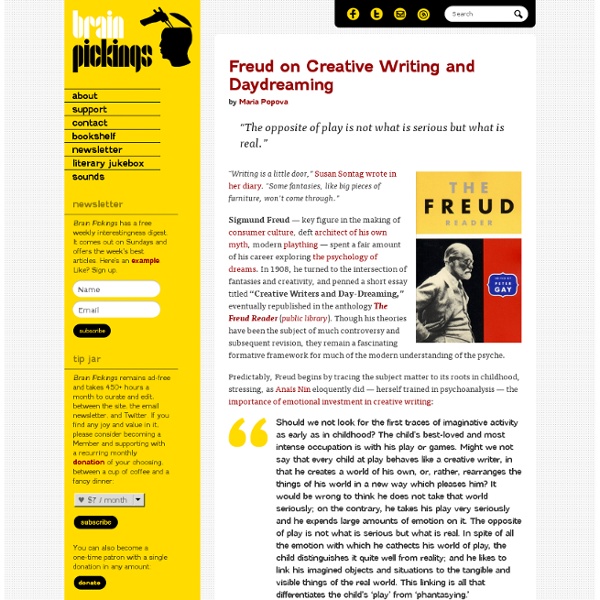Pink Poison, the Surprising New Trend That’s Saving Rhinos
With over 200 rhinos already dead this year at the hands of poachers in South Africa and no signs of the slaughter slowing, some innovative rhinoceros lovers are stepping up their game. Wildlife workers at Sabi Sand, a private game reserve at the southernmost tip of Kruger National Park, have injected a special cocktail into 100 rhino horns, turning them pink in an effort to deter illegal horn hunters. In addition to discoloring the horn, the pink dye can also be detected by airport scanners, even when the horn is ground into a powder to make the high-priced traditional "medicines" that help fuel the killing of rhinos. The hope is to make transport of the illegal product that much riskier. And that's not all.
10 Simple Postures That Boost Performance
Psychological research suggests simple actions can project power, persuade others, increase empathy, boost cognitive performance and more… We tend to think of body language as something that expresses our internal states to the outside world. But it also works the other way around: the position of our body also influences our mind. As the following psychological research shows, how we move can drive both thoughts and feelings and this can boost performance. 1.
Book Review: Lee Smolin's 'Time Reborn' : 13.7: Cosmos And Culture
iStockphoto.com We physicists are all romantics. Don't laugh; it's true. In our youth we all fall deeply in love. We fall in love with a beautiful idea: beyond this world of constant change lies another world that is perfect and timeless. This eternal domain is made not of matter or energy.
Psychology of Color [Infographic]
Perhaps no choice is as vital to marketing as color. Whether you are selecting the color for a product or for your email marketing campaign, color has tremendous impact on all of us. Subconsciously, we associate different colors with different things. This infographic examines the psychology of color and looks at some common associations of different colors. It shows the overall importance of color to consumers and characteristics of many individual colors, and it also helps show the connection between graphic design and psychology.
The Usefulness of Useless Knowledge
by Maria Popova “The real enemy is the man who tries to mold the human spirit so that it will not dare to spread its wings.” In an age obsessed with practicality, productivity, and efficiency, I frequently worry that we are leaving little room for abstract knowledge and for the kind of curiosity that invites just enough serendipity to allow for the discovery of ideas we didn’t know we were interested in until we are, ideas that we may later transform into new combinations with applications both practical and metaphysical. This concern, it turns out, is hardly new. We hear it said with tiresome iteration that ours is a materialistic age, the main concern of which should be the wider distribution of material goods and worldly opportunities. Mr.
Stanford imaging study reveals differences in brain function for children with math anxiety
Public release date: 21-Mar-2012 [ Print | E-mail | Share ] [ Close Window ] Contact: Erin Digitale digitale@stanford.edu 650-724-9175 Stanford University Medical Center
New clues on origins of Maya civilization unearthed
The Maya civilization is well-known for its elaborate temples, sophisticated writing system, and mathematical and astronomical developments, yet the civilization's origins remain something of a mystery.A new University of Arizona study to be published in the journal Science challenges the two prevailing theories on how the ancient civilization began, suggesting its origins are more complex than previously thought. Anthropologists typically fall into one of two competing camps with regard to the origins of Maya civilization. The first camp believes that it developed almost entirely on its own in the jungles of what is now Guatemala and southern Mexico. The second believes that the Maya civilization developed as the result of direct influences from the older Olmec civilization and its center of La Venta. "We really focused on the beginning of this civilization and how this remarkable civilization developed," said Inomata, UA professor of anthropology and the study's lead author.
Asch Experiment - Conformity in Groups
The Asch Experiment, by Solomon Asch, was a famous experiment designed to test how peer pressure to conform would influence the judgment and individuality of a test subject. The experiment is related closely to the Stanford Prison and Milgram Experiments, in that it tries to show how perfectly normal human beings can be pressured into unusual behavior by authority figures, or by the consensus of opinion around them. For the experiment, eight subjects were seated around a table, with the seating plan carefully constructed to prevent any suspicion. Only one participant was actually a genuine subject for the experiment, the rest being confederates, carefully tutored to give certain pre-selected responses. Careful experimental construction placed a varying amount of peer pressure on the individual test subject. The experiment was simple in its construction; each participant, in turn, was asked to answer a series of questions, such as which line was longest or which matched the reference line.



